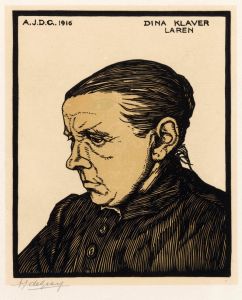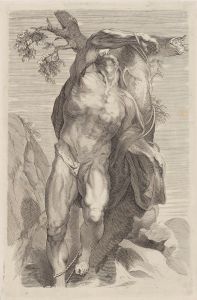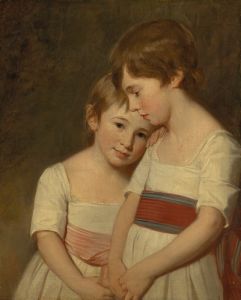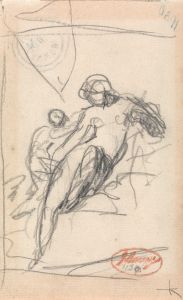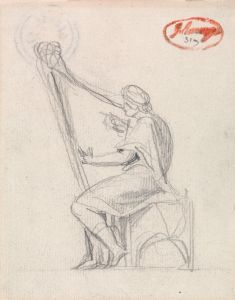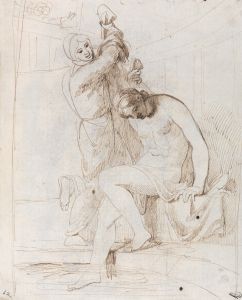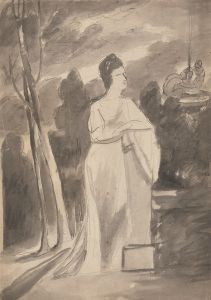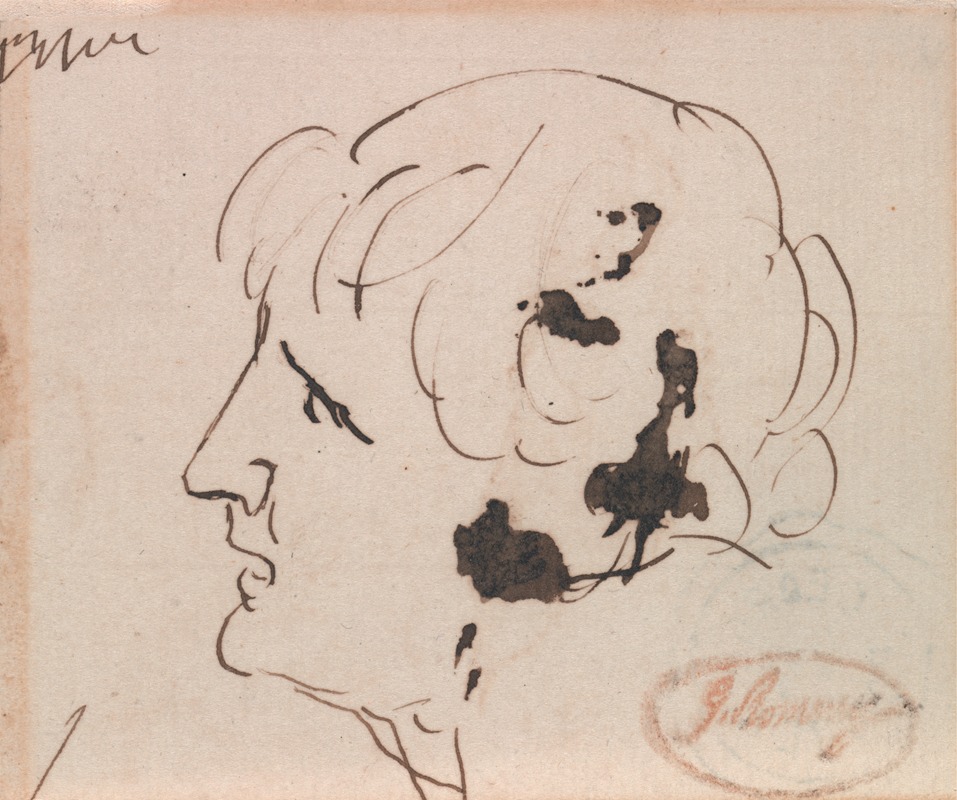
Head of a Man
A hand-painted replica of George Romney’s masterpiece Head of a Man, meticulously crafted by professional artists to capture the true essence of the original. Each piece is created with museum-quality canvas and rare mineral pigments, carefully painted by experienced artists with delicate brushstrokes and rich, layered colors to perfectly recreate the texture of the original artwork. Unlike machine-printed reproductions, this hand-painted version brings the painting to life, infused with the artist’s emotions and skill in every stroke. Whether for personal collection or home decoration, it instantly elevates the artistic atmosphere of any space.
"Head of a Man" is a painting by the renowned 18th-century British artist George Romney. Known for his portraiture, Romney was a prominent figure in the art world during his time, celebrated for his ability to capture the character and essence of his subjects. This particular work, "Head of a Man," exemplifies his skill in rendering the human face with both technical precision and emotional depth.
George Romney was born in 1734 in Dalton-in-Furness, Lancashire, England. He began his artistic career as an apprentice to a cabinet maker, but his passion for painting soon led him to pursue formal training in the arts. Romney moved to London in 1762, where he quickly established himself as a leading portrait painter, rivaling contemporaries such as Sir Joshua Reynolds and Thomas Gainsborough.
"Head of a Man" is a testament to Romney's mastery of portraiture. Although specific details about the painting's creation, such as the exact date and the identity of the sitter, are not well-documented, the work is characteristic of Romney's style during the height of his career. The painting focuses on the subject's face, capturing subtle expressions and conveying a sense of introspection and dignity. Romney's use of light and shadow adds depth to the portrait, highlighting the contours of the man's face and emphasizing his features.
Romney's portraits are often noted for their psychological insight, and "Head of a Man" is no exception. The painting reflects Romney's interest in exploring the inner life of his subjects, a quality that set his work apart from many of his contemporaries. His ability to depict the nuances of human emotion and character made his portraits highly sought after by the British elite.
Throughout his career, Romney painted numerous notable figures, including political leaders, aristocrats, and cultural icons. However, he also produced many studies and sketches, such as "Head of a Man," which demonstrate his ongoing exploration of human expression and form. These works often served as exercises in capturing the essence of a subject with minimal detail, focusing instead on the overall impression and mood.
Romney's influence on British art was significant, and his works continue to be studied and admired for their technical skill and emotional resonance. "Head of a Man" is a fine example of his ability to convey the complexity of human character through portraiture. Today, Romney's paintings are held in numerous prestigious collections, including the National Portrait Gallery in London and the Tate Gallery, ensuring that his legacy endures.
In summary, "Head of a Man" by George Romney is a compelling example of 18th-century British portraiture, showcasing the artist's talent for capturing the essence of his subjects. While specific details about the painting remain limited, its significance lies in its representation of Romney's artistic prowess and his contribution to the development of portrait painting during his era.






